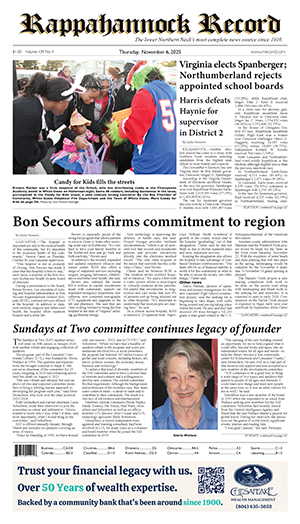As the observances commemorating the semiquincentennial of the American Revolution already have begun, awareness of the importance of the Chesapeake Bay region in determining the outcome of the war is essential. In their struggle to achieve independence, the colonists were not alone, as Britain’s old nemesis, France, readily offered assistance to their cause.
As a result, the United States always has considered France to be our oldest ally. In that regard, the war ended because the French fleet bottled up the British fleet in the York River. The British fleet had been bringing troops to join their land forces. thereby leaving Cornwallis, the British commander, with no alternative but to surrender.
The French fleet was under the command of the Comte de Grasse, a French nobleman, “Comte” being the French word for the English “Count.” The British fleet had moved up the York River beyond the narrow point between the tip of Gloucester Point and Yorktown, the line of which today comprises the Coleman Bridge’s crossing of the river on Route 17. That move proved to be their undoing.
Cornwallis accepted defeat without going to meet General Washington on the Surrender Field outside of Yorktown. On October 19, 1781, he sent a deputy to offer his sword to Washington, who refused to accept it from a subordinate, and designated his own subordinate, General Benjamin Lincoln to accept the surrender.
The ensuing fates of de Grasse and Cornwallis following Yorktown are quite different. After the Battle of the Chesapeake, de Grasse proceeded to return to the Caribbean to challenge British hegemony there. In alliance with the Spanish, France hoped to seize Jamaica, the richest island in the Caribbean, then held by Britain. Less than six months after the victory at Yorktown, from April 9-17, 1782, de Grasse reencountered the British fleet under the commence of Admiral Sir George Rodney off the Windward Islands in what came to be known as the Battle of the Saintes. His fleet was defeated, four ships being captured and one sunk.
Admiral de Grasse was captured, but soon allowed to return to France. He blamed his defeat on his captains, but a court martial found them to be innocent, signaling the end of de Grasse’s naval career. He died at Tilly in France, on January 11, 1788, a year and a half before the outbreak of the French Revolution with the Storming of the Bastille on July 14, 1789.
Three U.S. naval ships have been named for de Grasse, as well as several communities, waterways and monuments, one of which being his statue at the Riverwalk in Yorktown. He was a Knight of Saint Louis, a French dynastic order founded by King Louis XIV in 1683 and a Knight of the Order of Saint John, also known as the Order of Malta. He also was member of the Society of the Cincinnati.
In 1931, to commemorate the 150th anniversary of the Battle of Yorktown, the United States issued a postage stamp depicting Washington, de Grasse and the Comte de Rochambeau, the commander of French land forces.
Cornwallis fared better after his defeat at Yorktown. He served in India, was knighted in 1786, and created first Marquess in 1792. He was Lord Lieutenant of Ireland from 1798 to 1801, after which he returned to India where he died shortly after his arrival in 1805 and is buried in Uttar Pradesh. His son succeeded him as Marquess, but having five daughters and no son of his own, the title became extinct upon his death in 1823.
As Cornwallis was not brought back to England for burial, to honor his memory, a large memorial was erected in Saint Paul’s Cathedral in London. Ironically, the year after his victory in the Battle of the Chesapeake, de Grasse’s career came to an end, whereas after Yorktown, Cornwallis continued to advance up until his death. “Sic transit gloria mundi” (Thus passes the gloria of the world).






